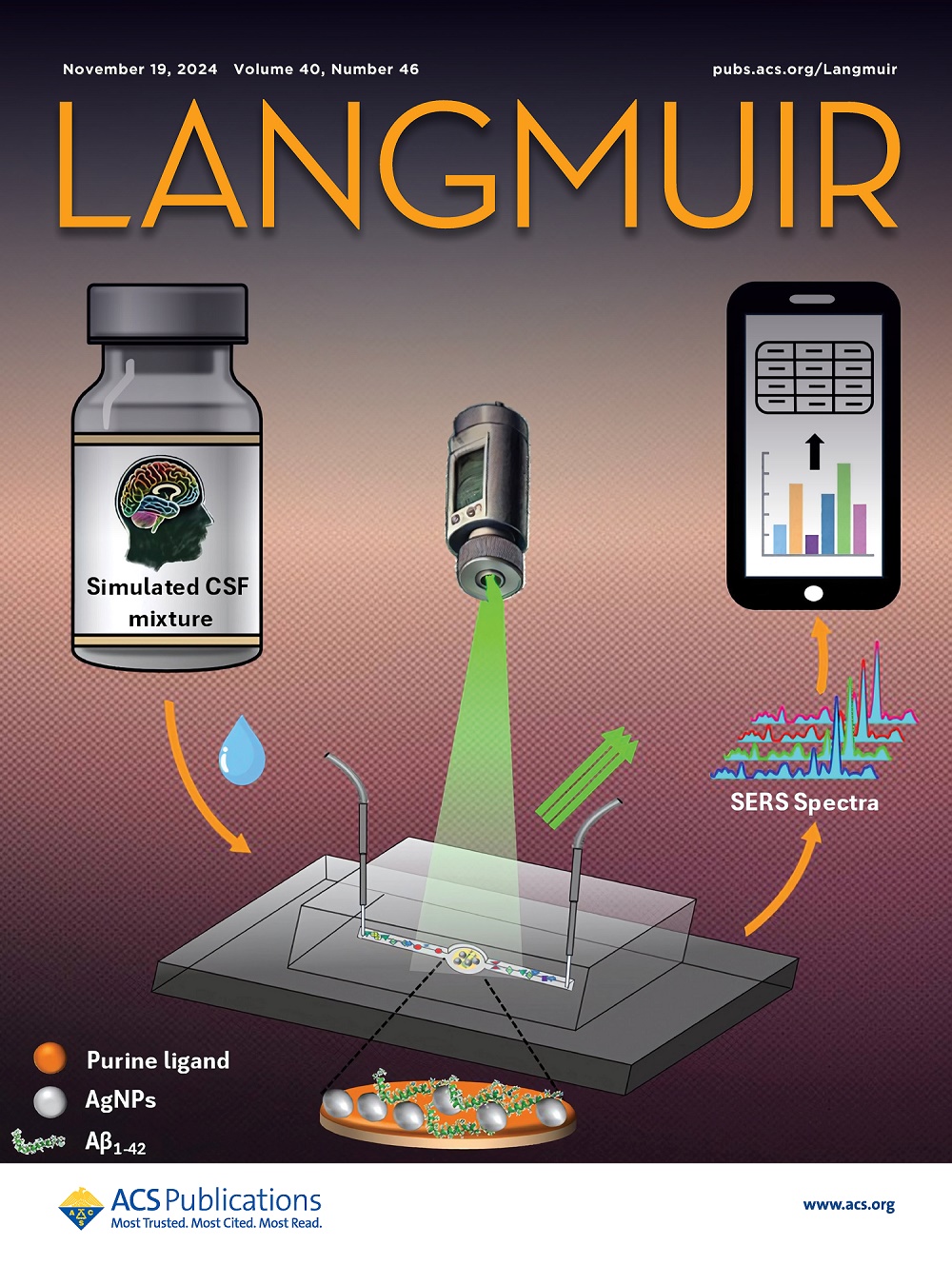Surface Area Determination with a Laboratory Scale and Room Humidity from Single-Point BET Analysis of Physisorbed Water.
IF 3.9
2区 化学
Q2 CHEMISTRY, MULTIDISCIPLINARY
引用次数: 0
Abstract
For decades, nitrogen physisorption and the BET equation have been utilized for the characterization of the specific surface area of porous materials. Quantifying physisorbed nitrogen at cryogenic conditions is not instrumentally challenging nor relatively expensive, as liquid nitrogen is common to many chemical laboratories, and turnkey commercial physisorption units are within the budget of many research laboratories. However, a great simplification in instrumentation and a decrease in measurement cost can be achieved by physisorption experiments performed at room temperature and pressure. In this work, it was hypothesized that single-point BET analysis can be applied to physisorbed water at room pressure and temperature with humidity as the measure of relative pressure. That is, the surface area of porous materials can be determined with a lab balance to measure mass and a hygrometer to measure humidity at ambient temperature and pressure. The hypothesis was tested first in a thermogravimetric analyzer and second with a simple benchtop scale and a common hand-held hygrometer for six types of alumina beads, three with microporous and mesoporous pore size distributions and three predominantly mesoporous samples. The single-point BET equation is used to correlate the monolayer capacity of adsorbed water with the TGA mass loss and laboratory humidity. By correlating water monolayer capacity with N2 BET surface areas, the effective cross-sectional area of H2O was calculated to be approximately 20 Å2. This value was applied to the single-point BET analysis of humidity versus mass of samples made on the benchtop scale. The mean error of the benchtop balance measurements was 8.5%, suggesting the feasibility of using simple instrumentation under ambient conditions for surface area determination. It is in principle possible to extend the ambient humidity BET to other materials.用实验室尺度和室内湿度测定物理吸附水的单点BET分析的表面积。
几十年来,氮的物理吸附和BET方程被用于表征多孔材料的比表面积。在低温条件下定量物理吸附氮并不具有仪器挑战性,也不相对昂贵,因为液氮在许多化学实验室中是常见的,而且许多研究实验室的预算范围内都有交钥匙商业物理吸附装置。然而,通过在室温和常压下进行物理吸附实验,可以大大简化仪器并降低测量成本。在这项工作中,假设单点BET分析可以应用于室温和室温下的物理吸附水,湿度作为相对压力的测量。也就是说,多孔材料的表面积可以用实验室天平来测量质量,用湿度计来测量环境温度和压力下的湿度。该假设首先在热重分析仪上进行了测试,然后用简单的台式秤和普通的手持式湿度计对六种氧化铝珠进行了测试,其中三种具有微孔和介孔孔径分布,三种主要是介孔样品。采用单点BET方程将吸附水的单层容量与热失重失重和实验室湿度联系起来。通过将水单分子层容量与N2 BET表面积相关联,计算出H2O的有效横截面积约为20 Å2。该值应用于在台式尺度上制作的样品的湿度与质量的单点BET分析。台式天平测量的平均误差为8.5%,表明在环境条件下使用简易仪器进行表面积测定是可行的。原则上可以将环境湿度BET扩展到其他材料。
本文章由计算机程序翻译,如有差异,请以英文原文为准。
求助全文
约1分钟内获得全文
求助全文
来源期刊

Langmuir
化学-材料科学:综合
CiteScore
6.50
自引率
10.30%
发文量
1464
审稿时长
2.1 months
期刊介绍:
Langmuir is an interdisciplinary journal publishing articles in the following subject categories:
Colloids: surfactants and self-assembly, dispersions, emulsions, foams
Interfaces: adsorption, reactions, films, forces
Biological Interfaces: biocolloids, biomolecular and biomimetic materials
Materials: nano- and mesostructured materials, polymers, gels, liquid crystals
Electrochemistry: interfacial charge transfer, charge transport, electrocatalysis, electrokinetic phenomena, bioelectrochemistry
Devices and Applications: sensors, fluidics, patterning, catalysis, photonic crystals
However, when high-impact, original work is submitted that does not fit within the above categories, decisions to accept or decline such papers will be based on one criteria: What Would Irving Do?
Langmuir ranks #2 in citations out of 136 journals in the category of Physical Chemistry with 113,157 total citations. The journal received an Impact Factor of 4.384*.
This journal is also indexed in the categories of Materials Science (ranked #1) and Multidisciplinary Chemistry (ranked #5).
 求助内容:
求助内容: 应助结果提醒方式:
应助结果提醒方式:


